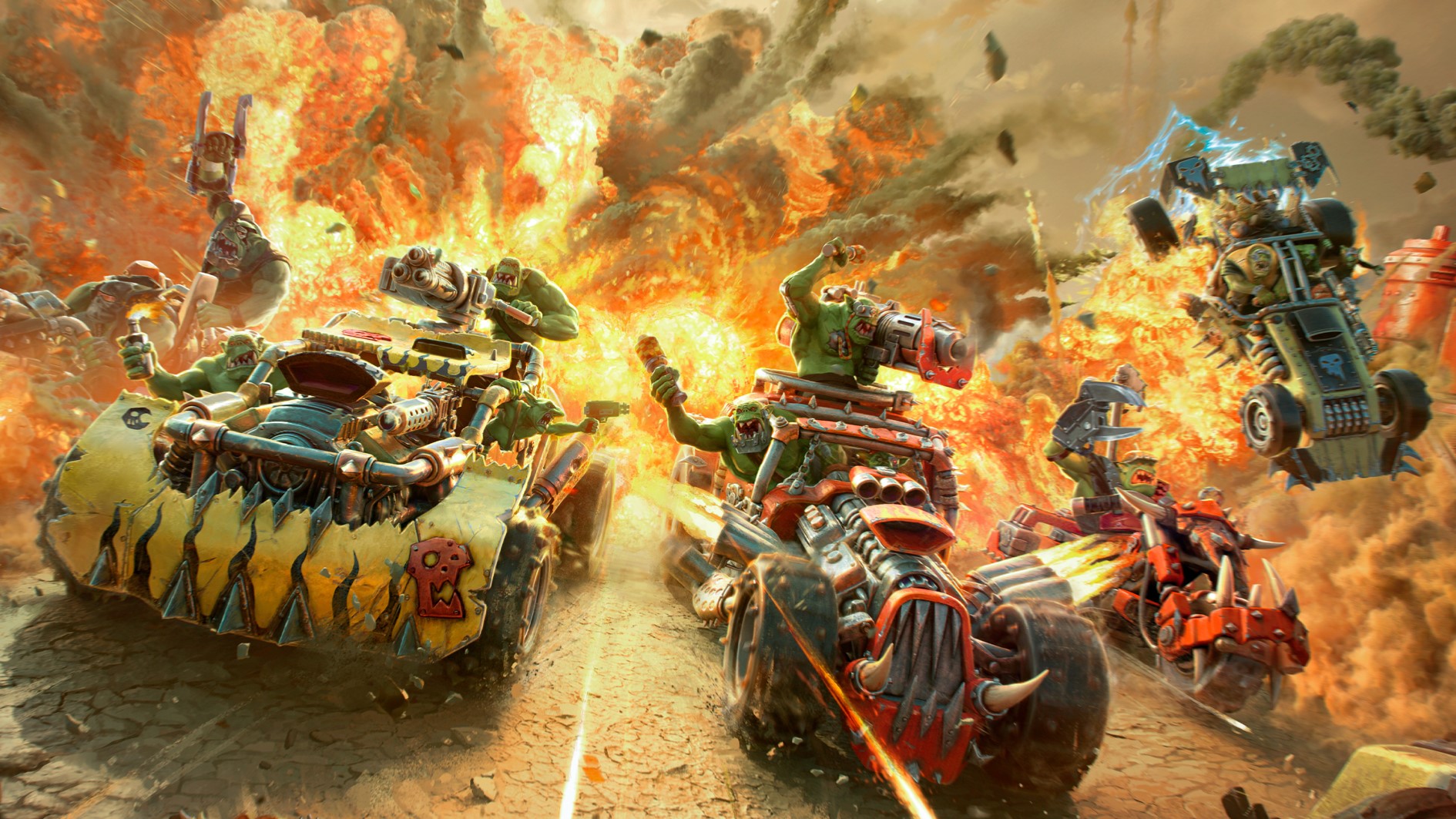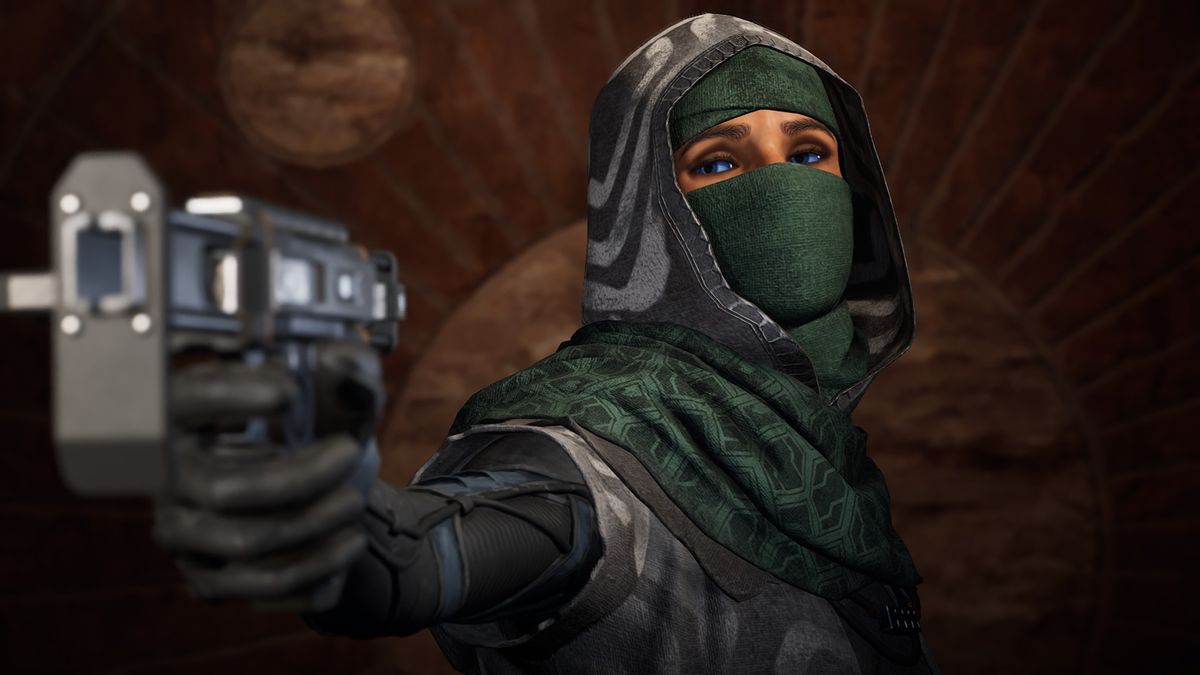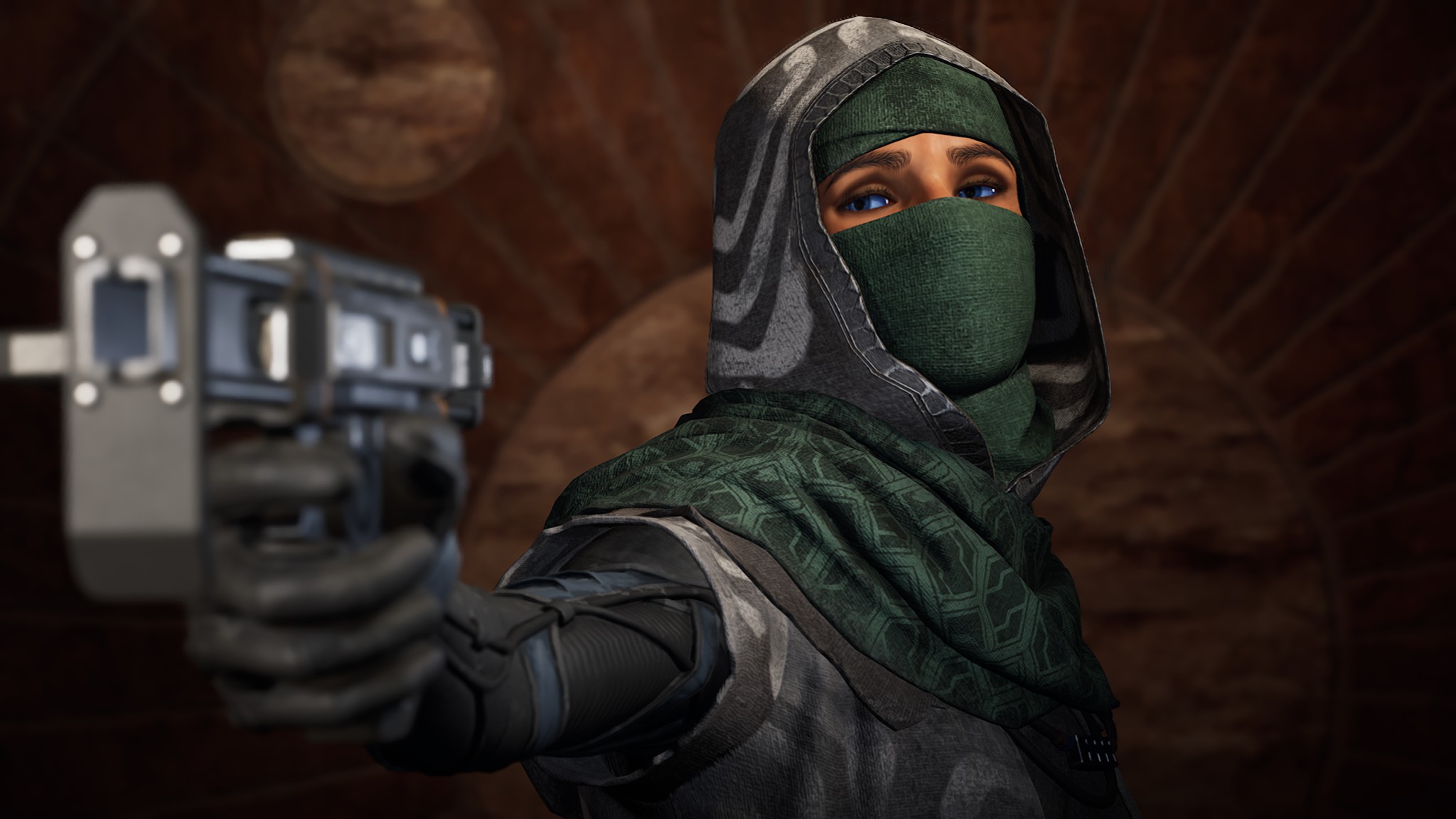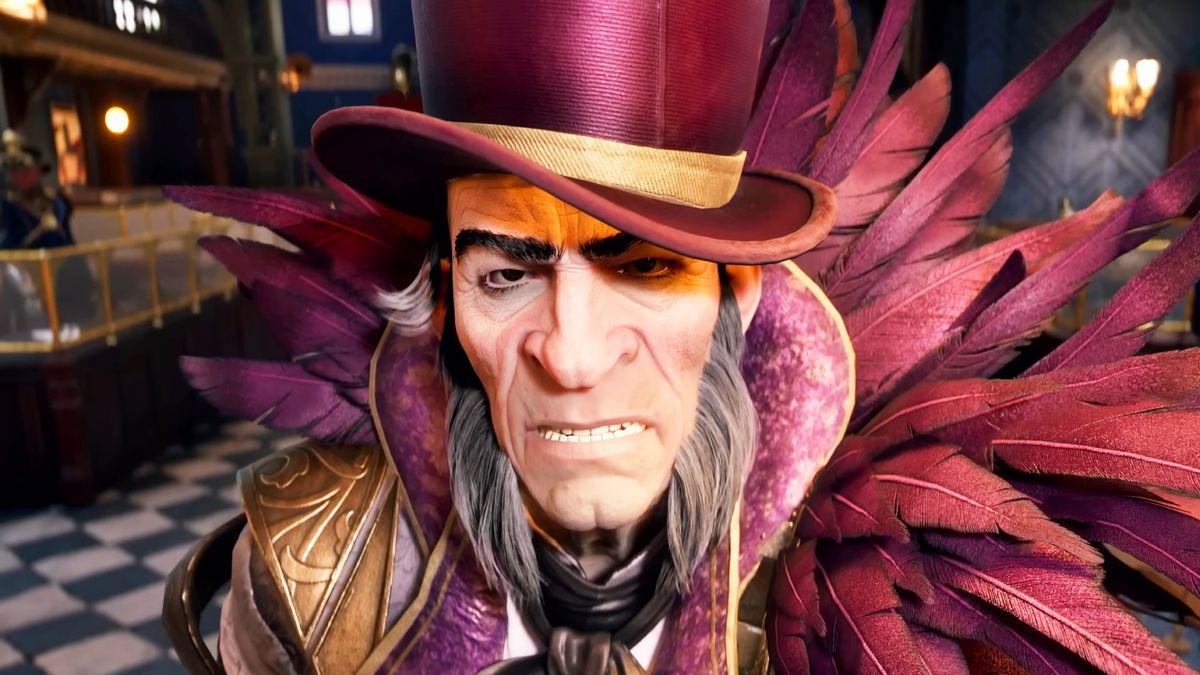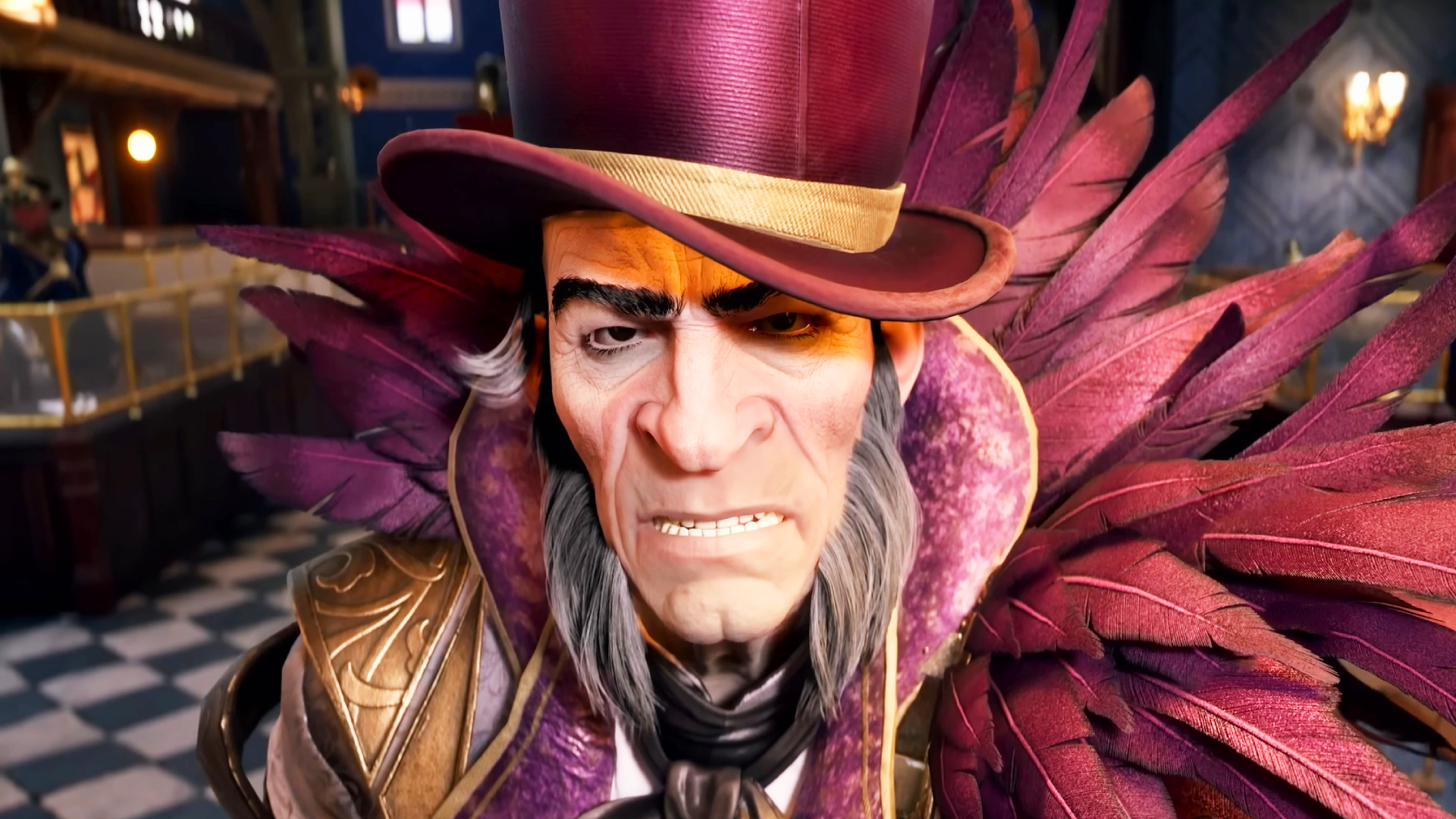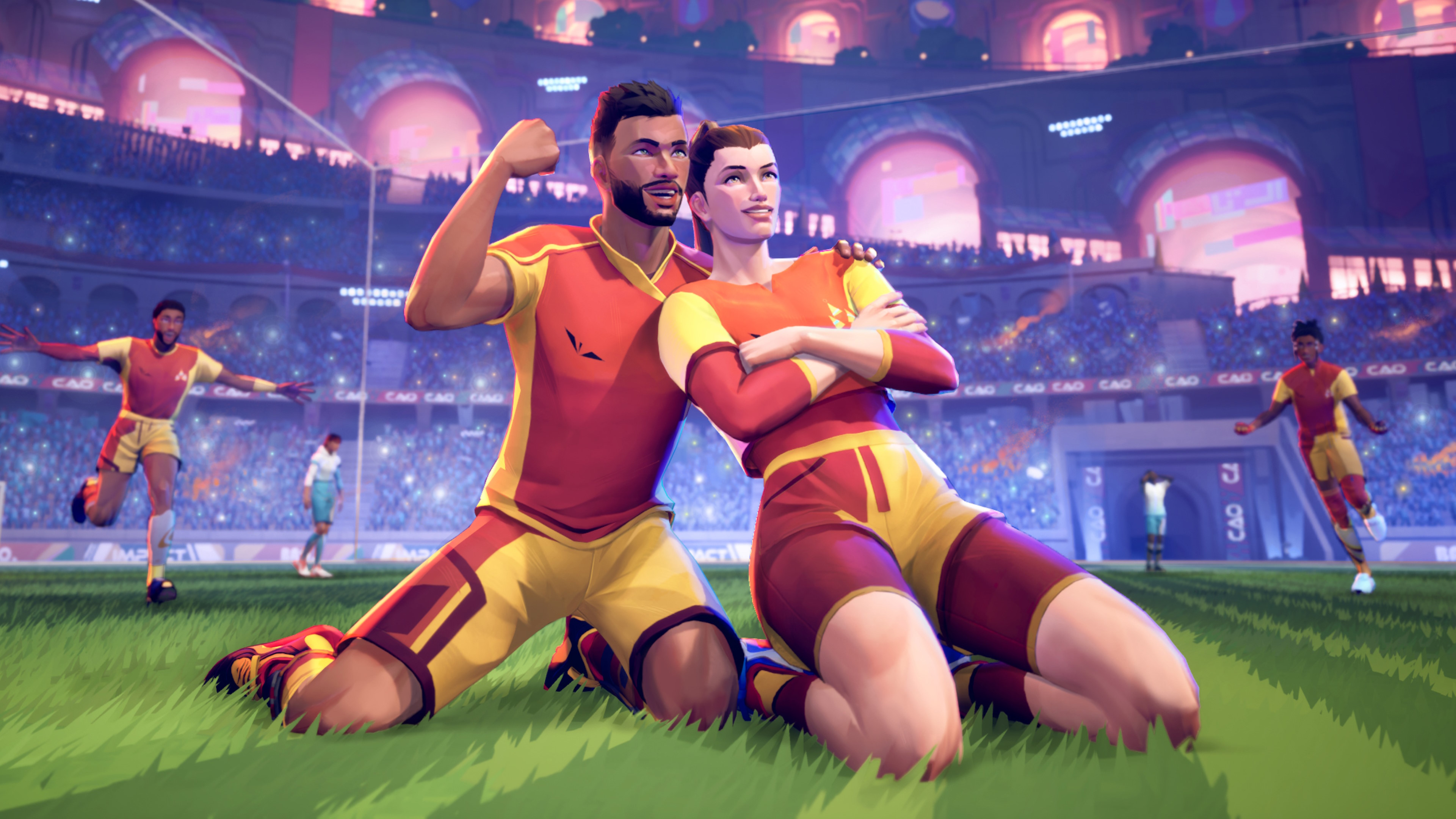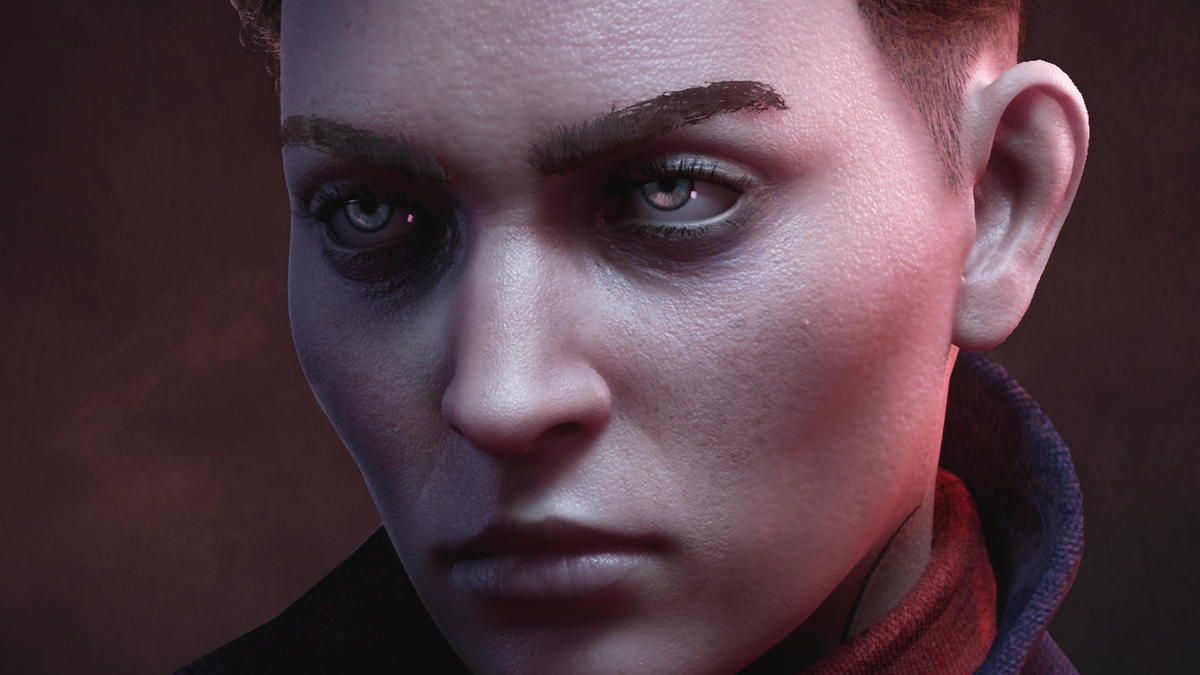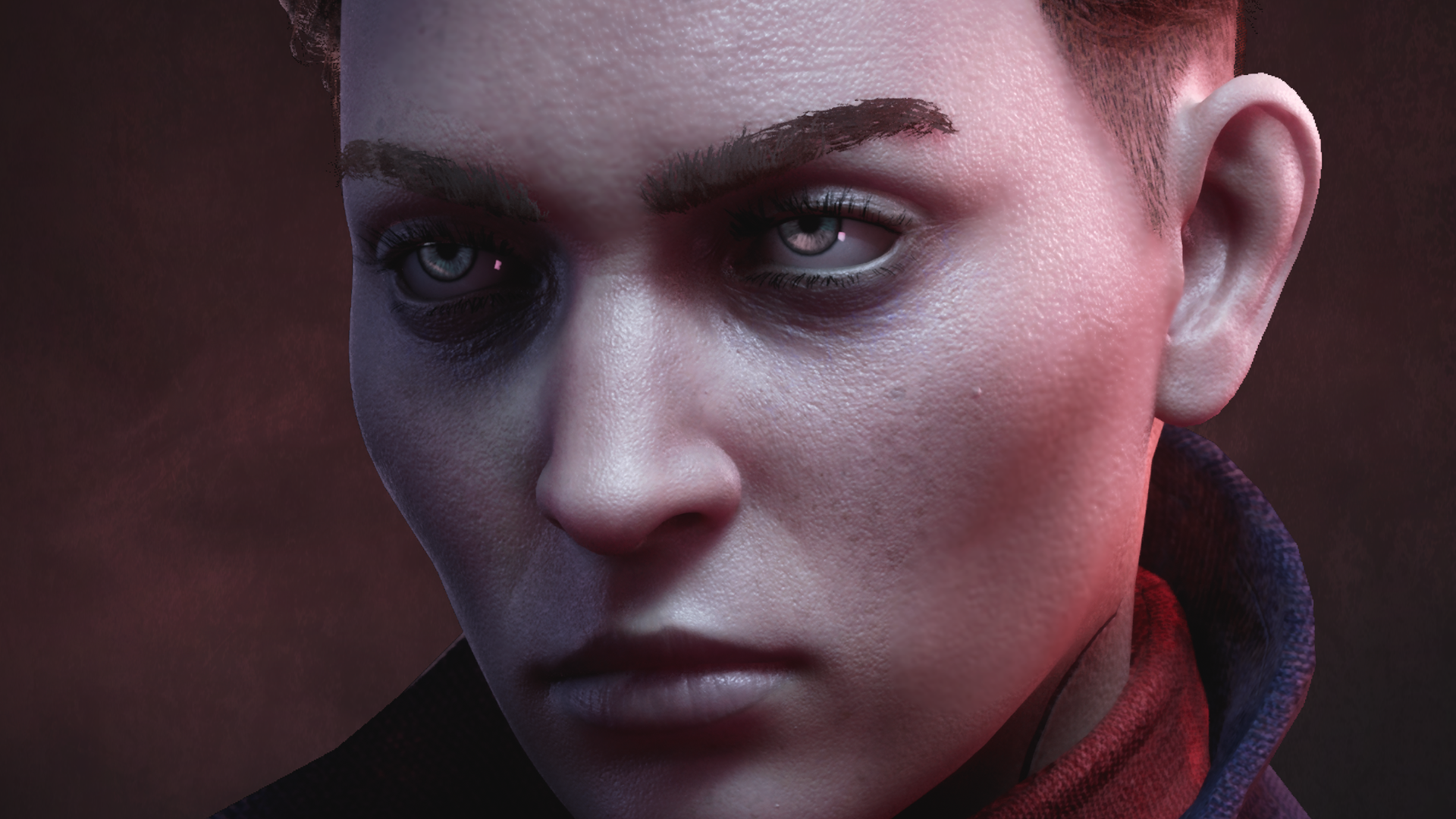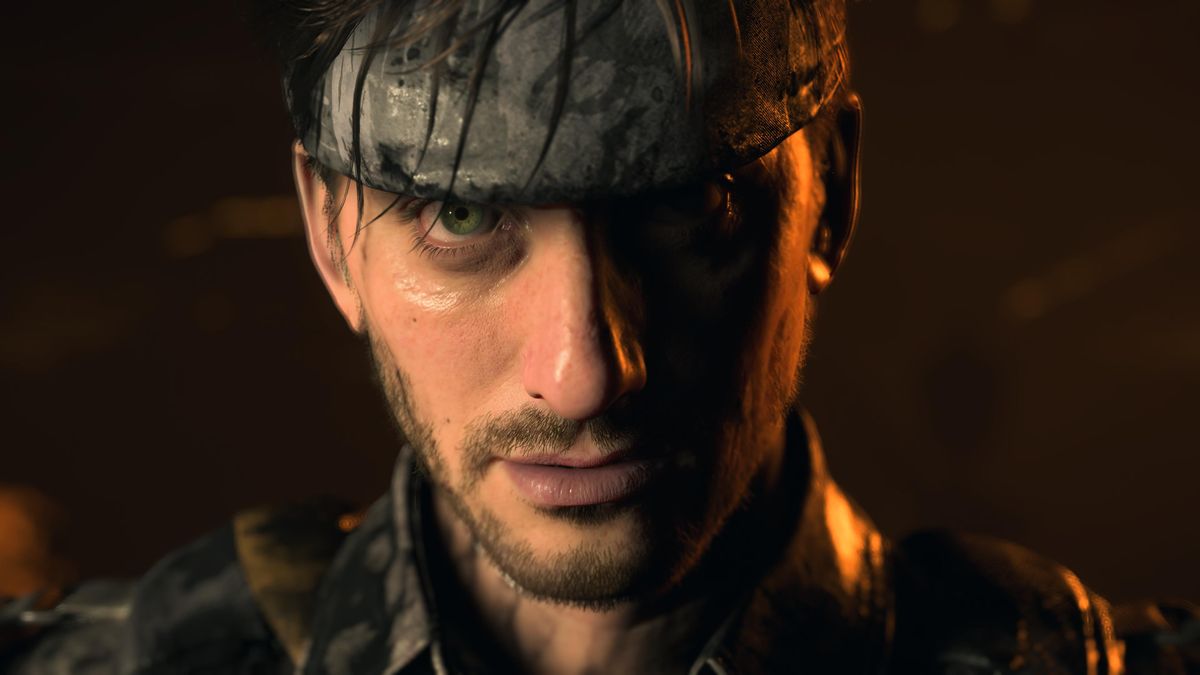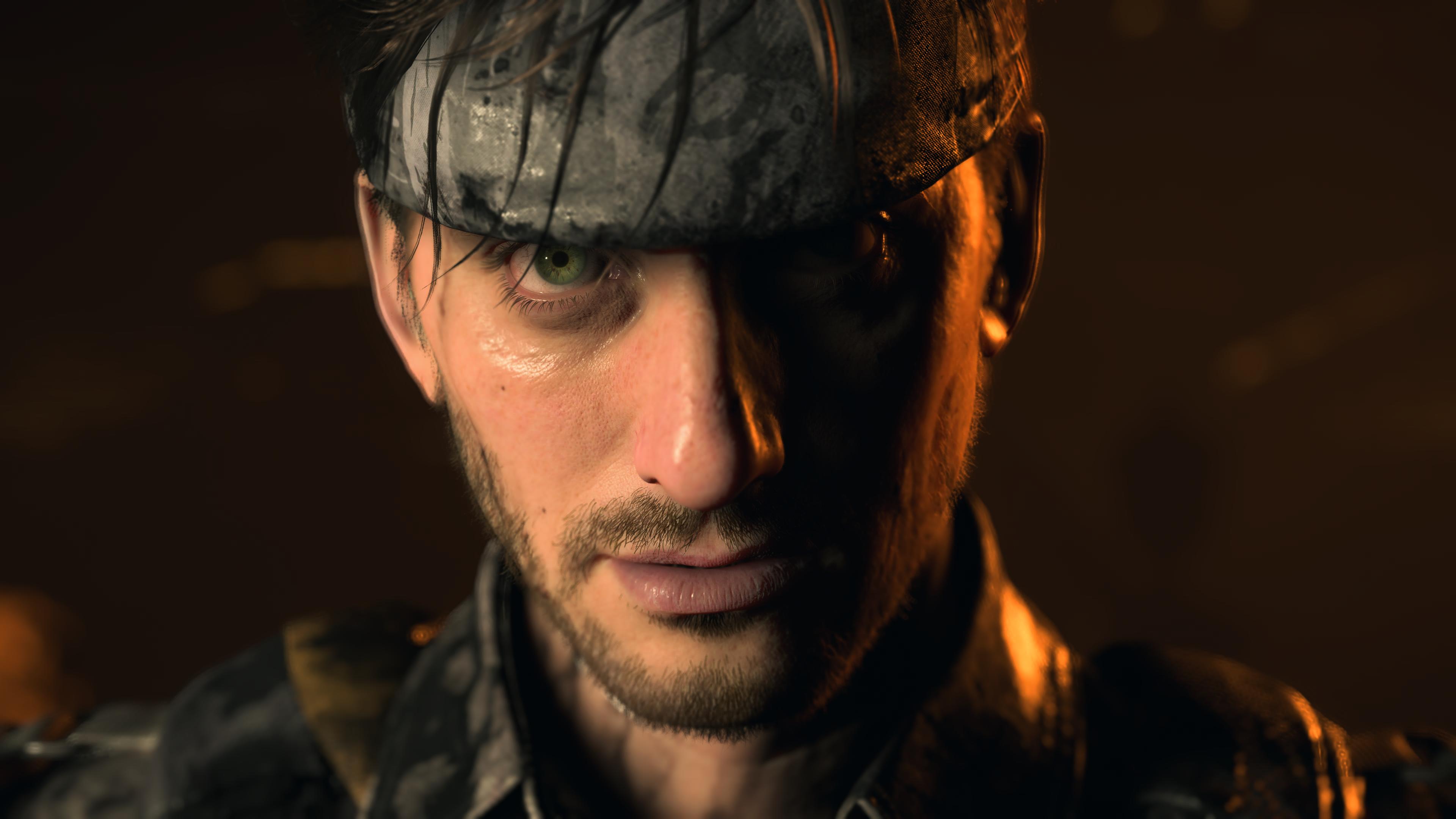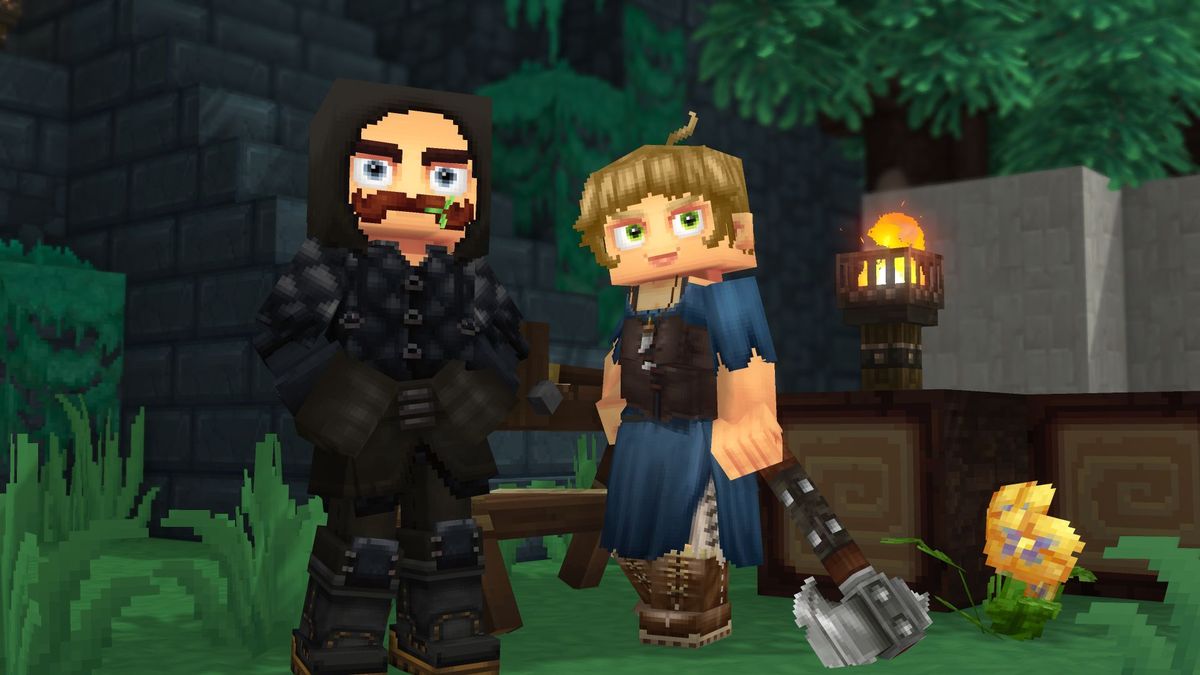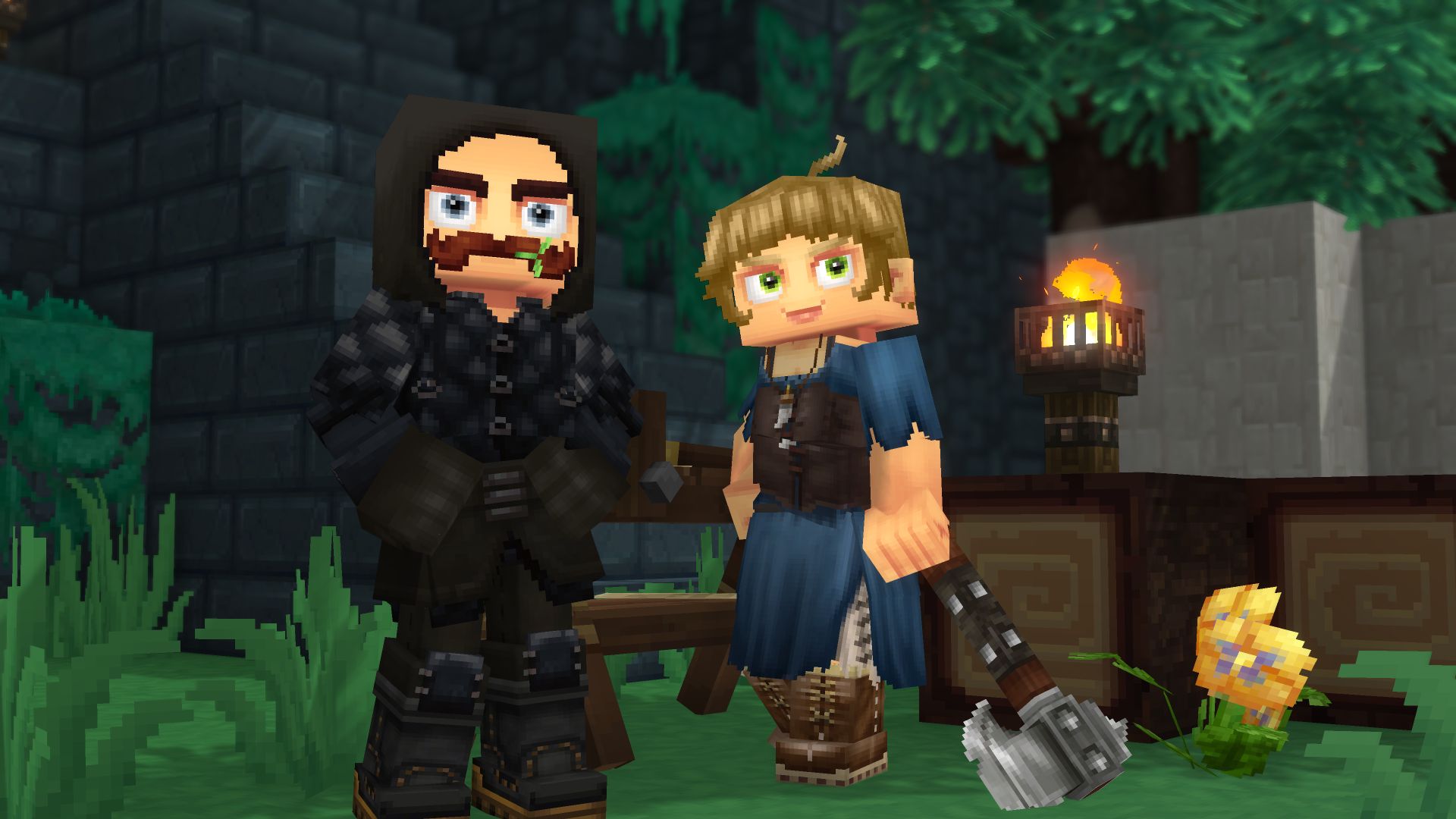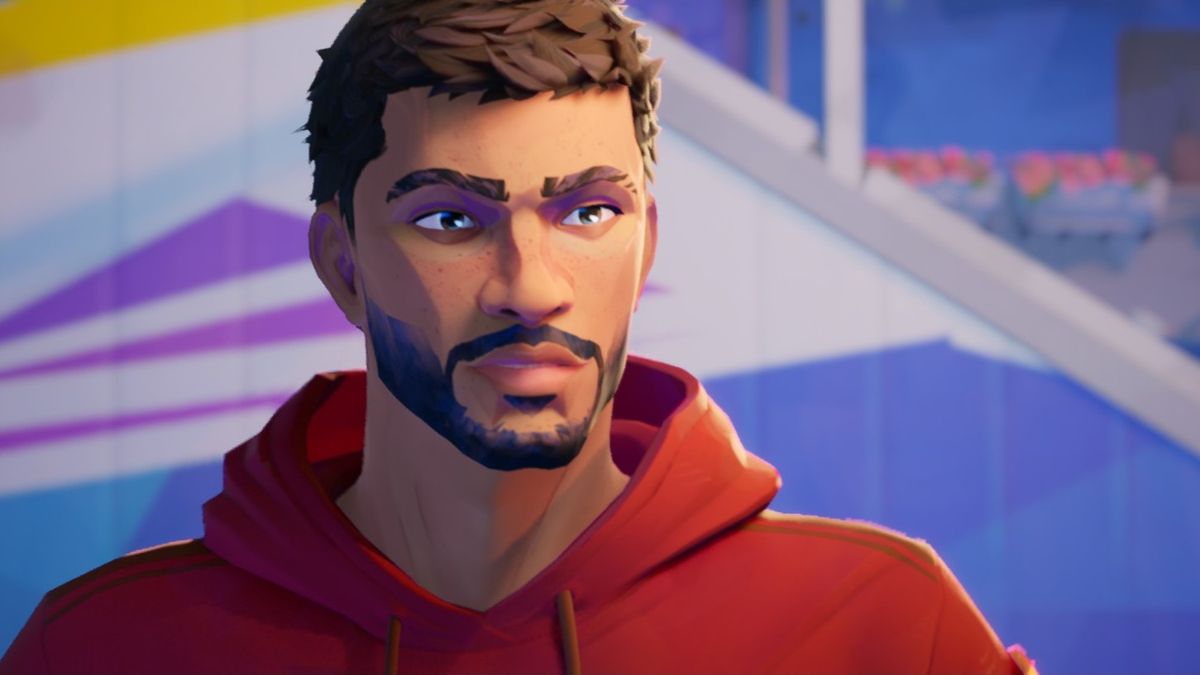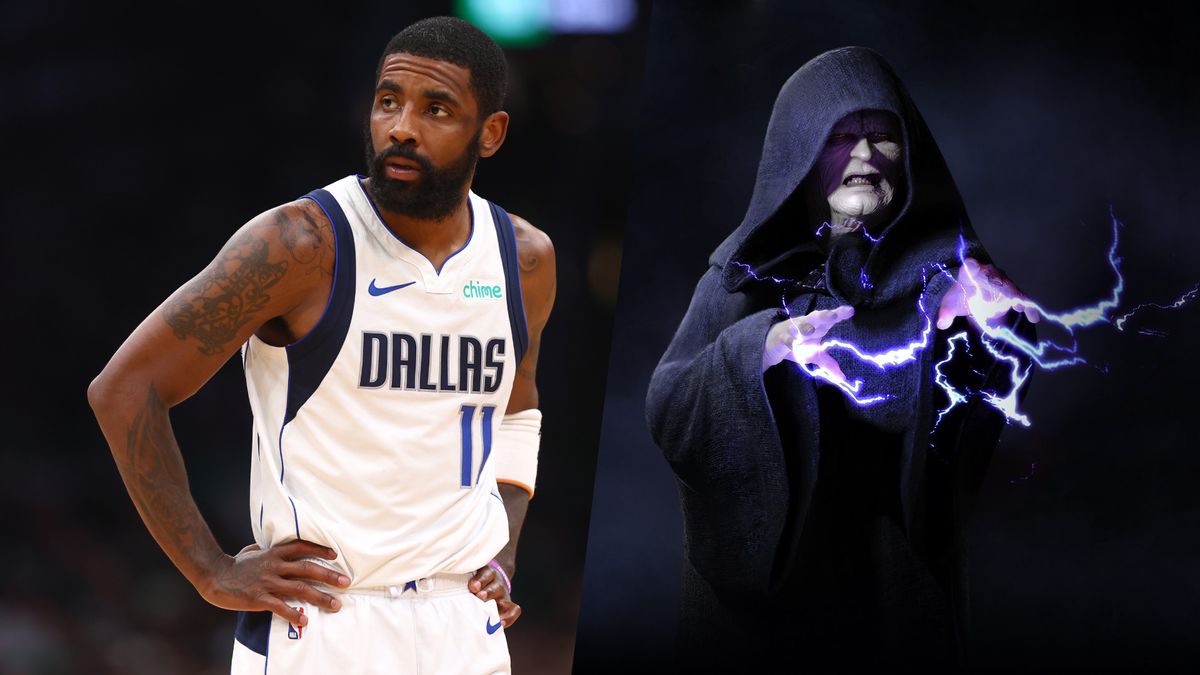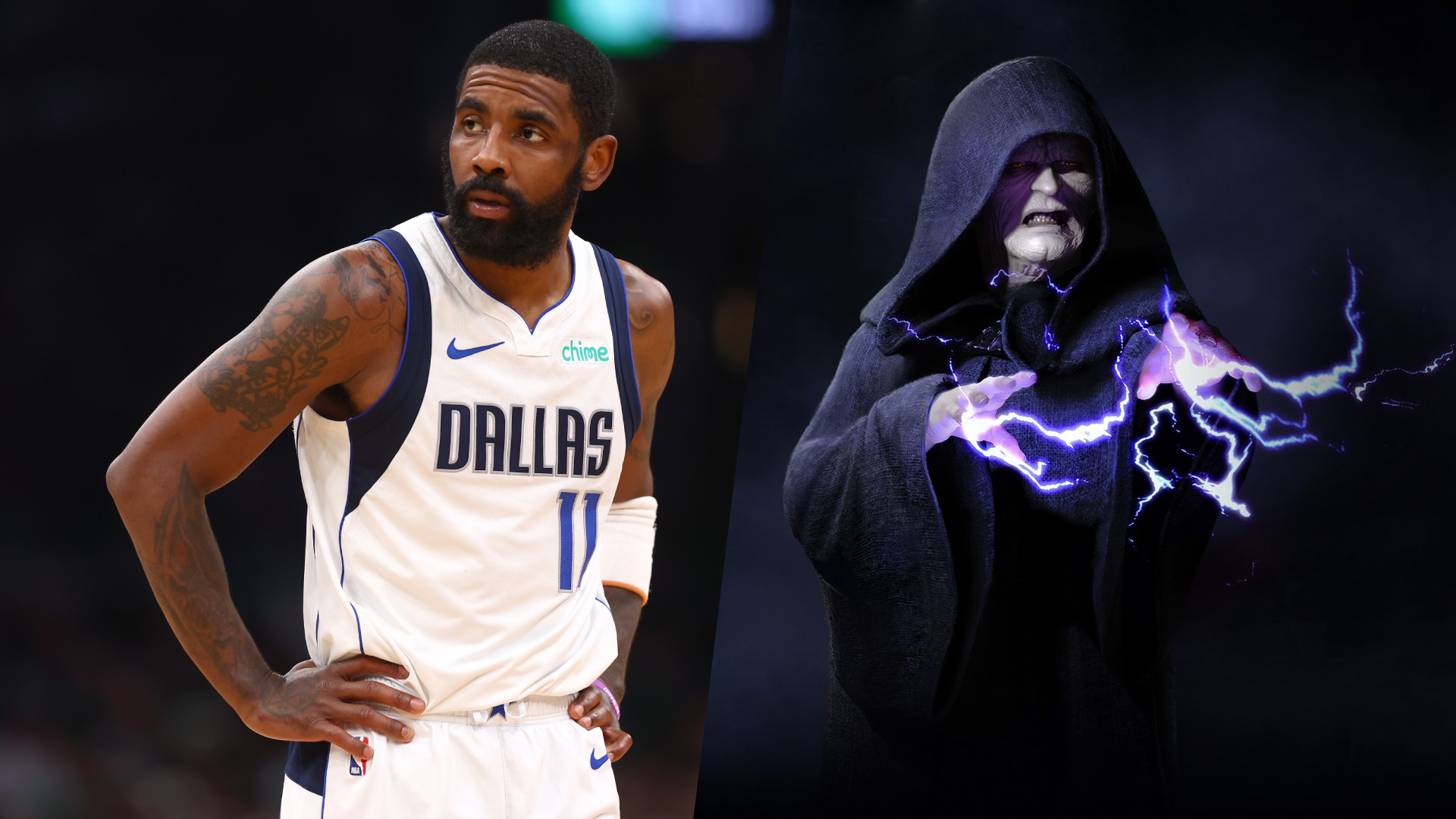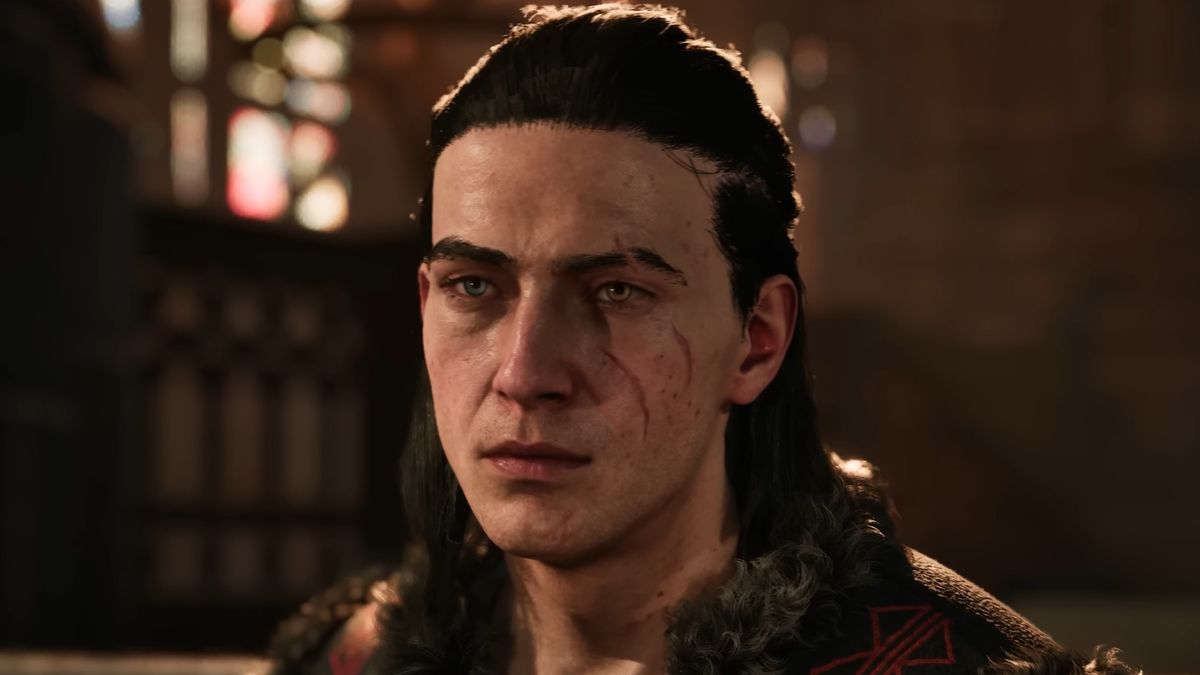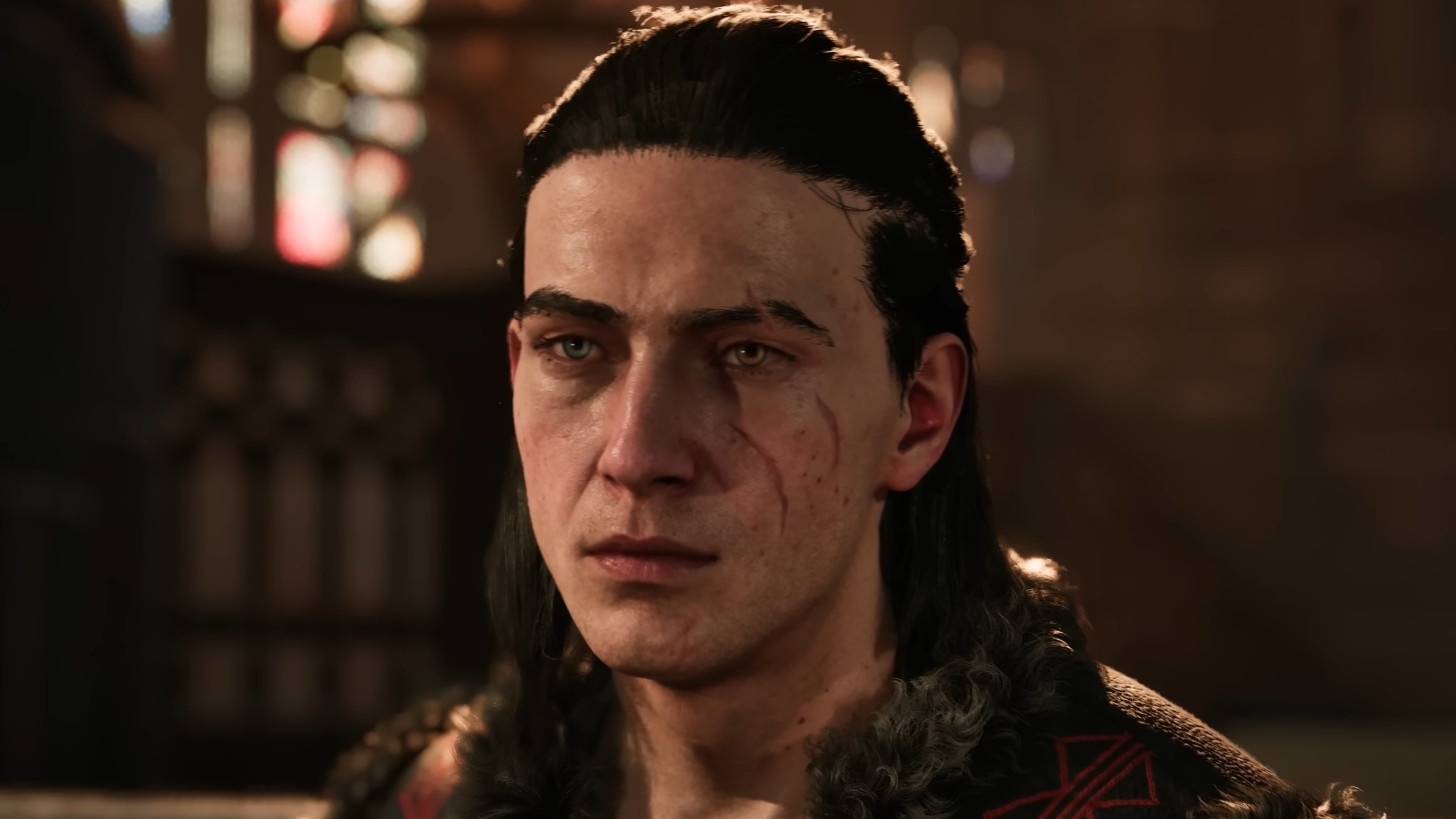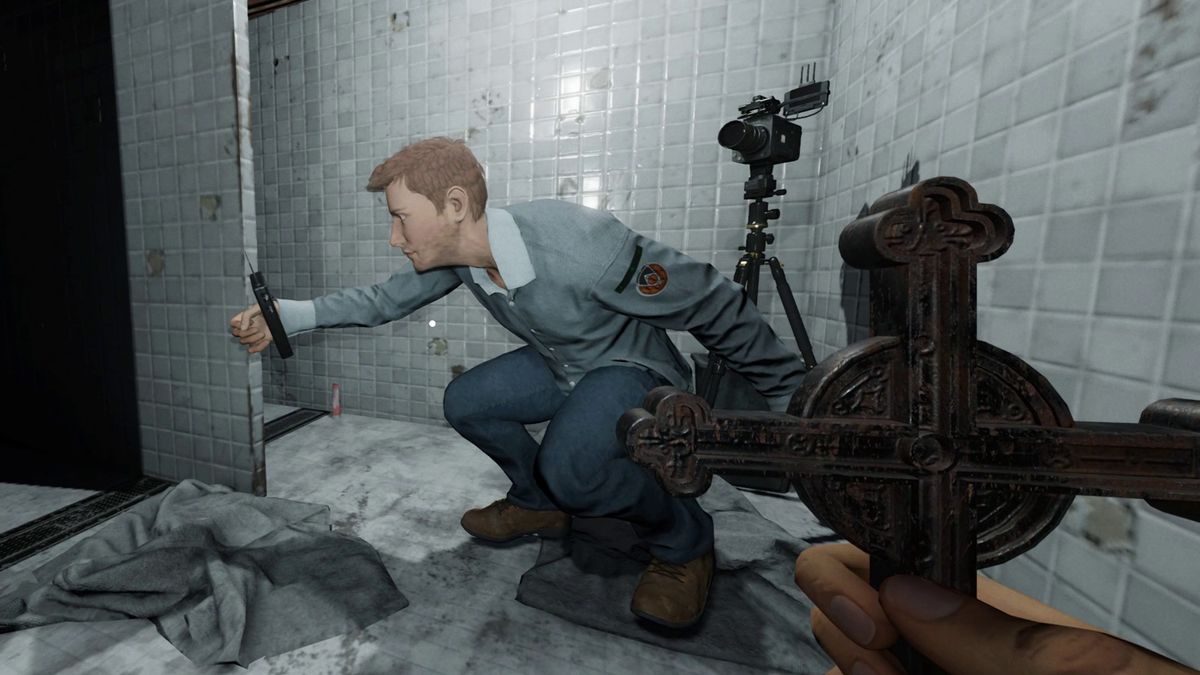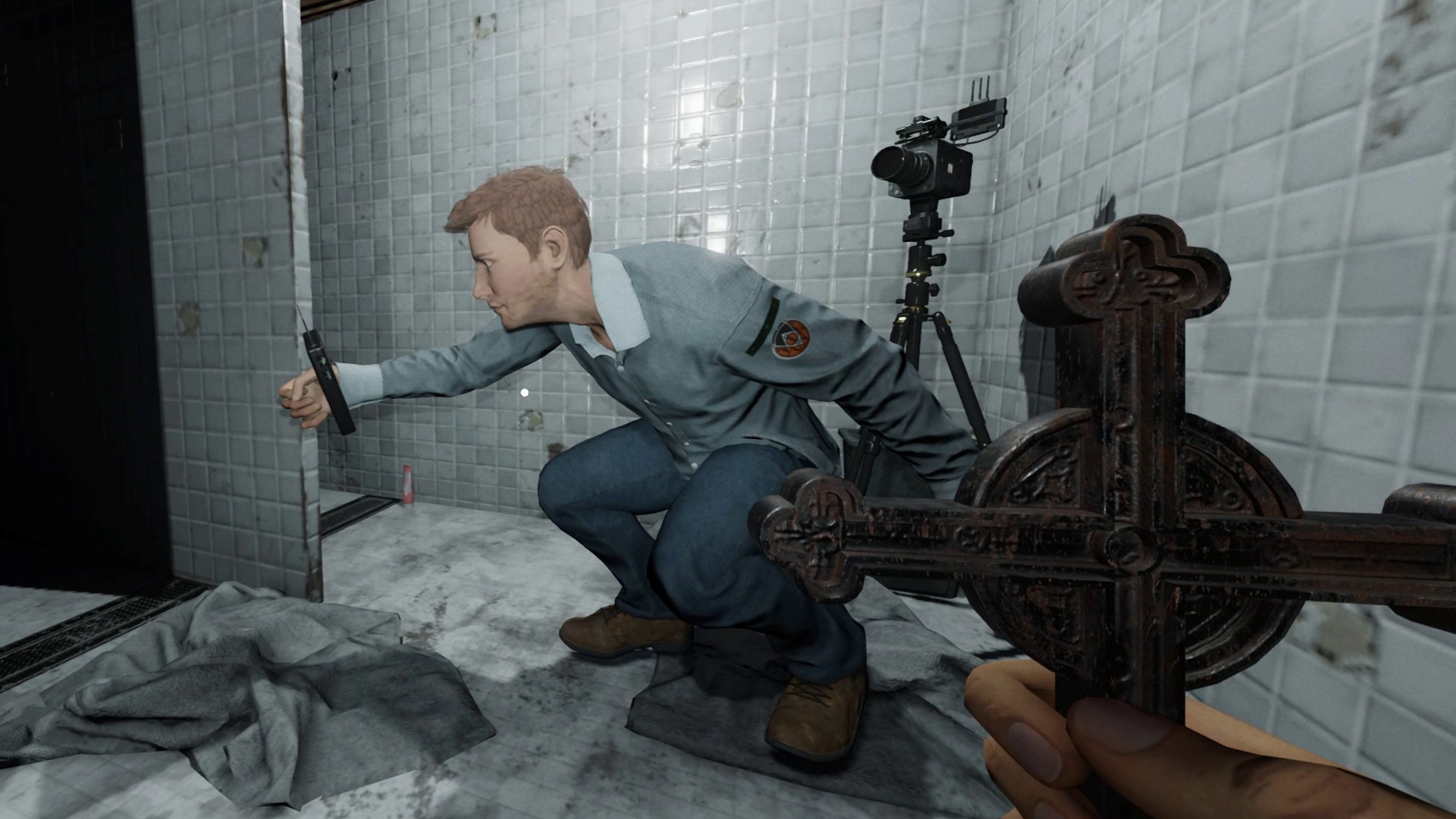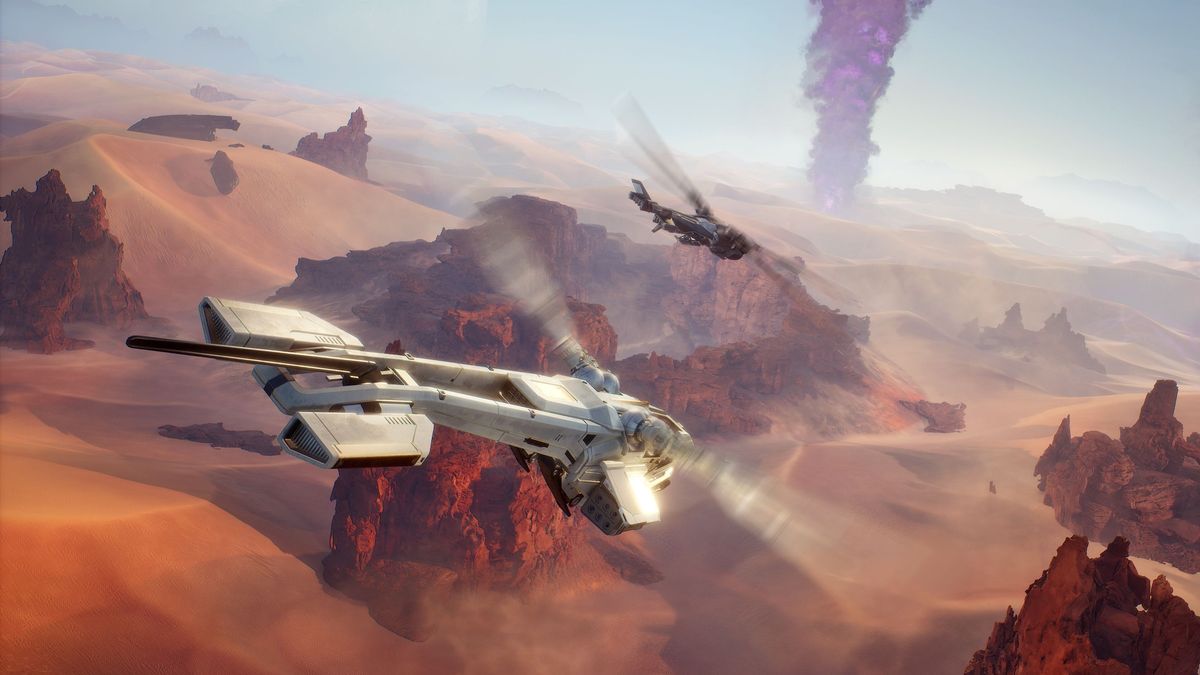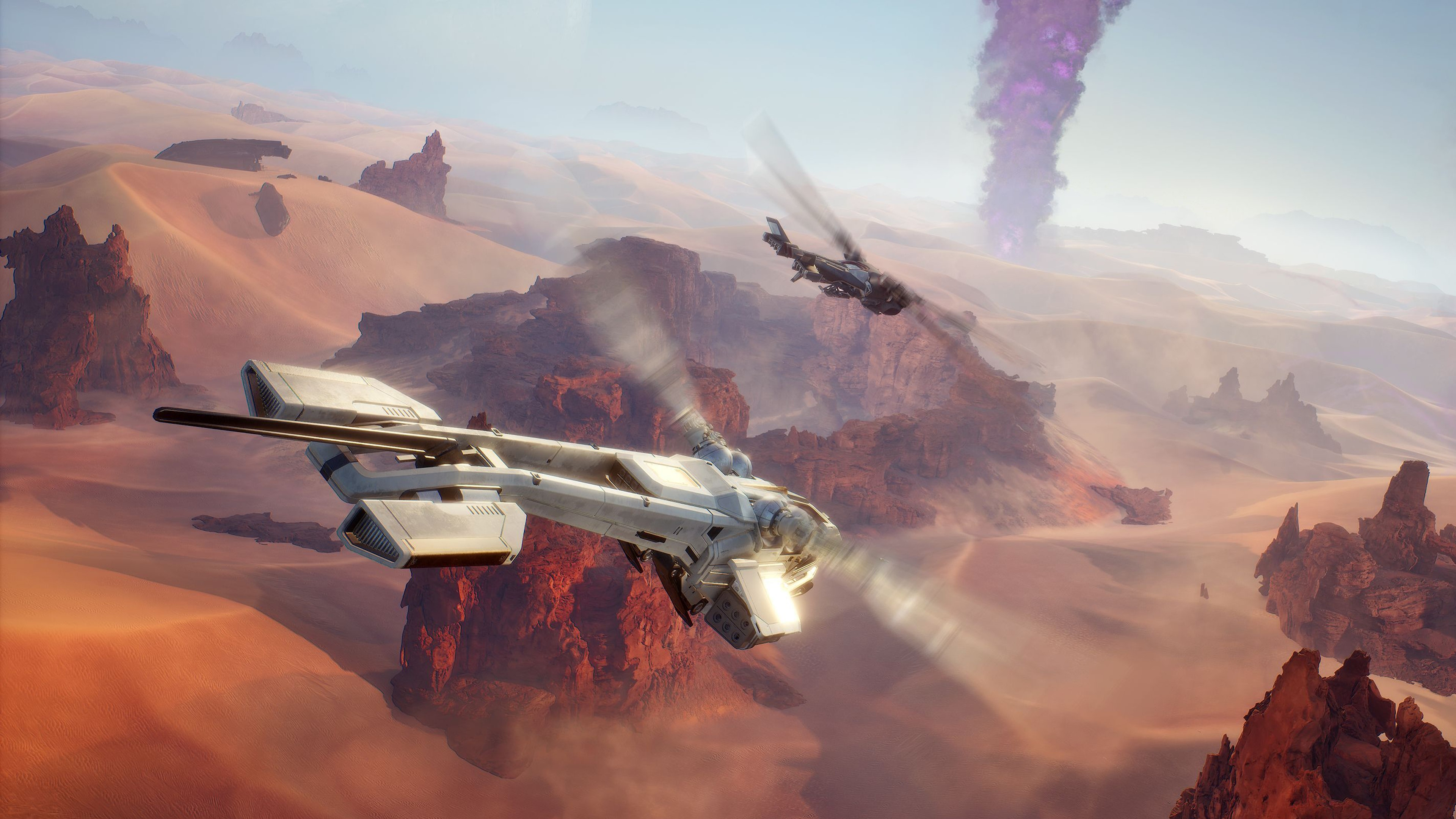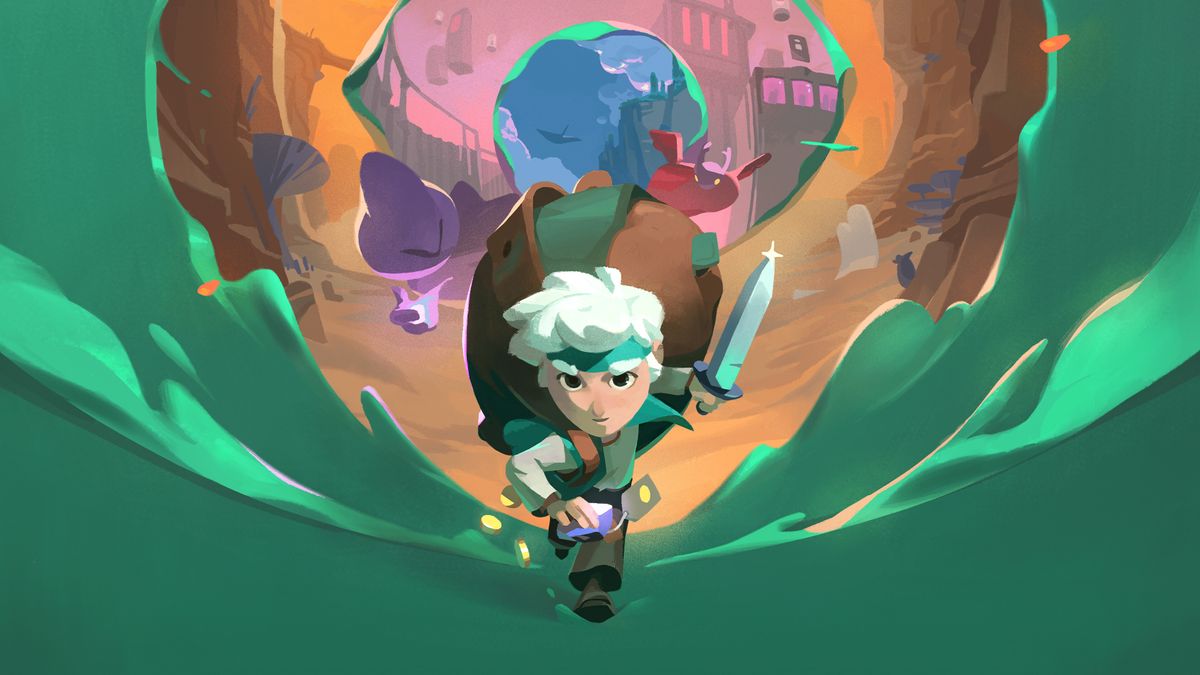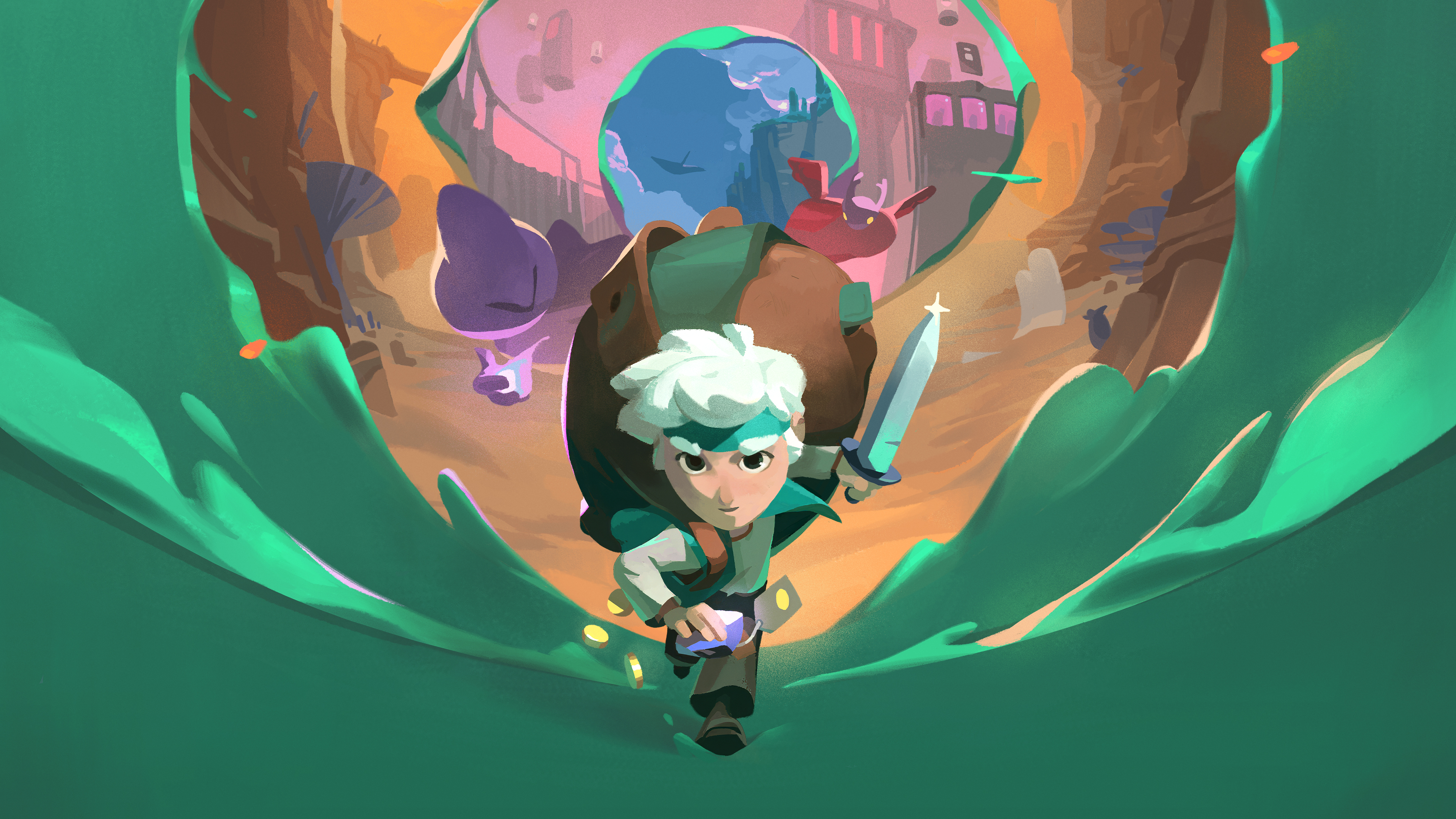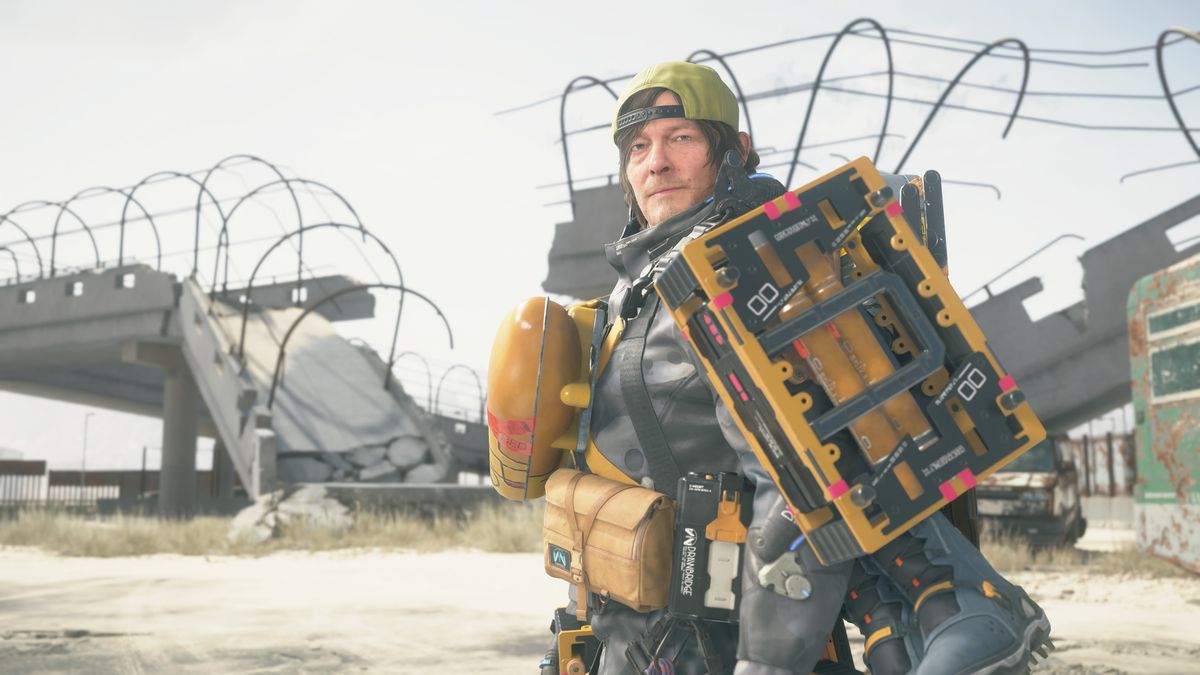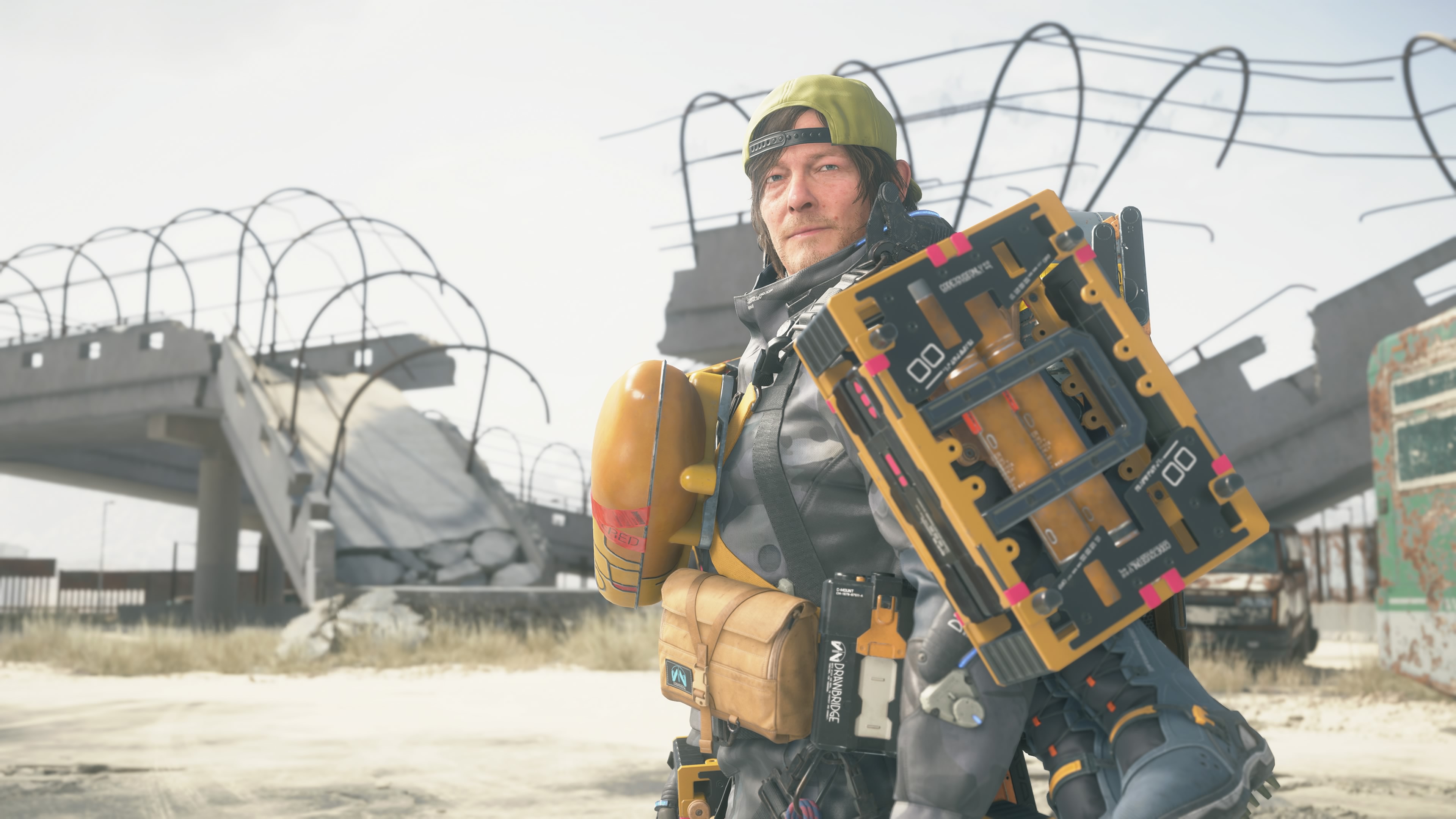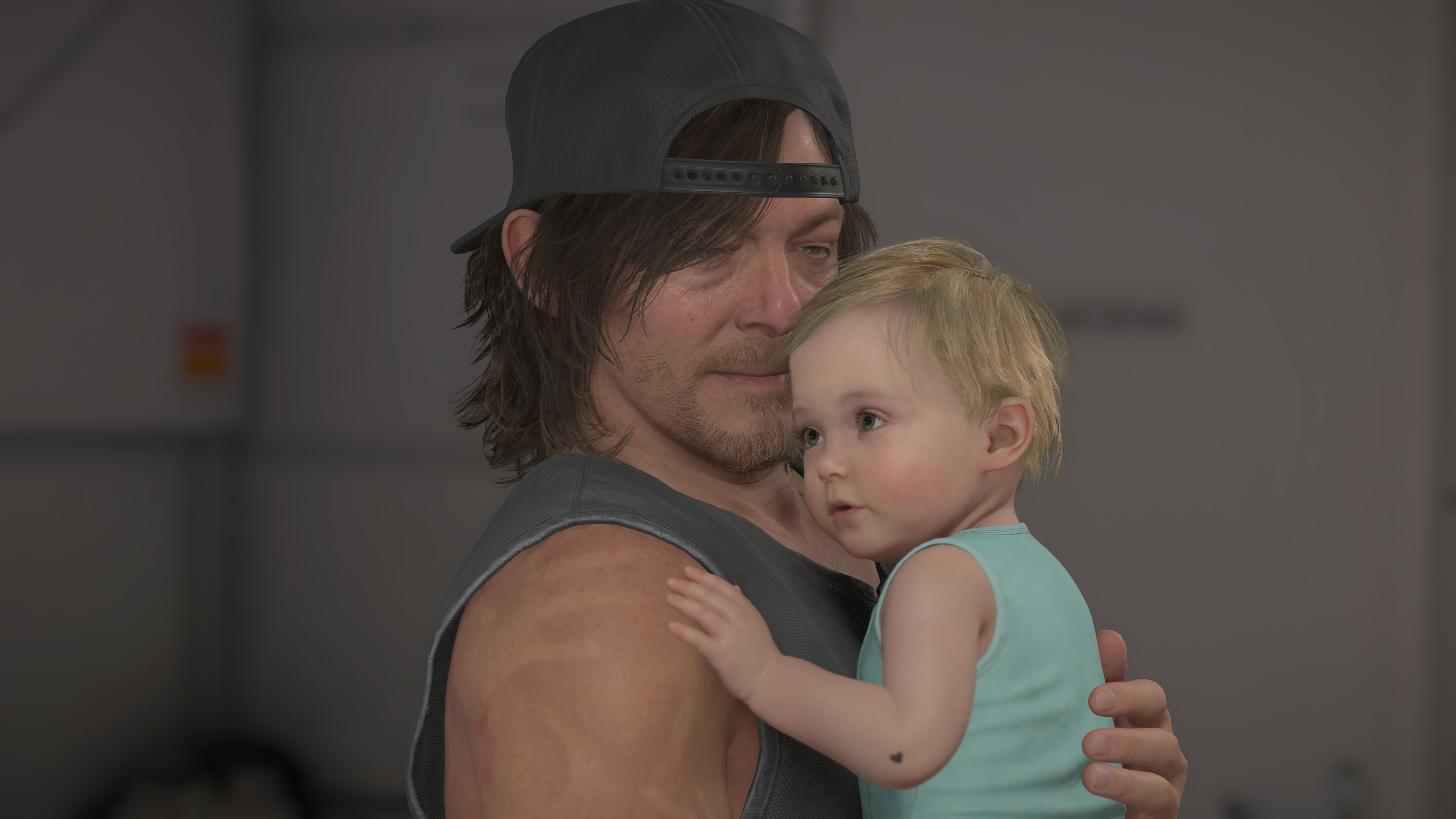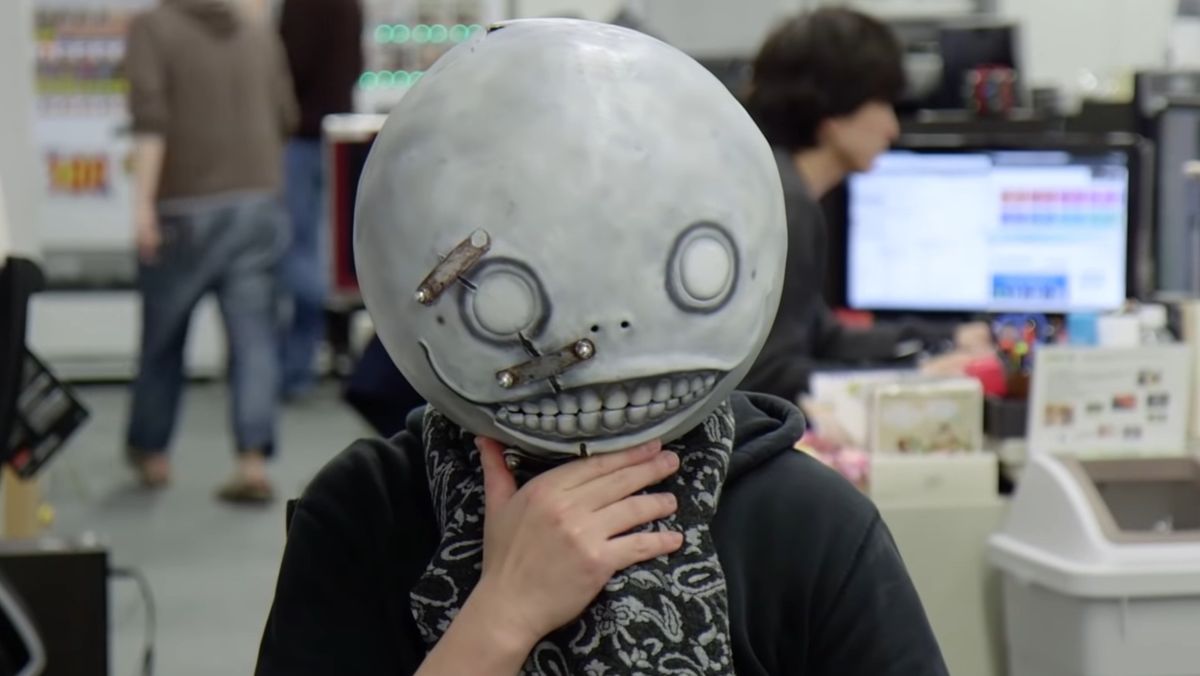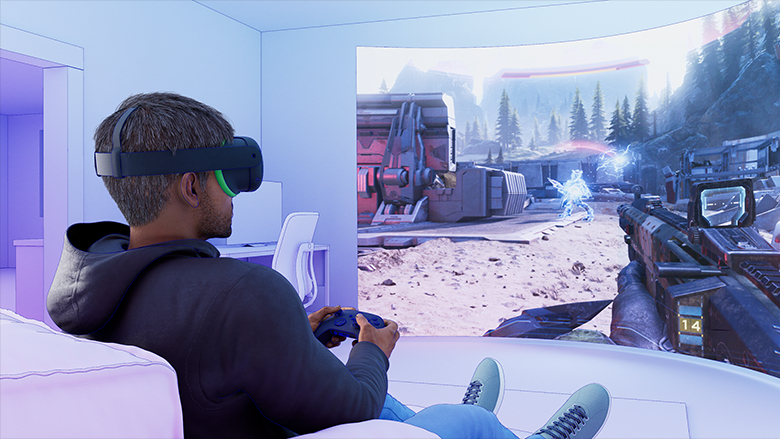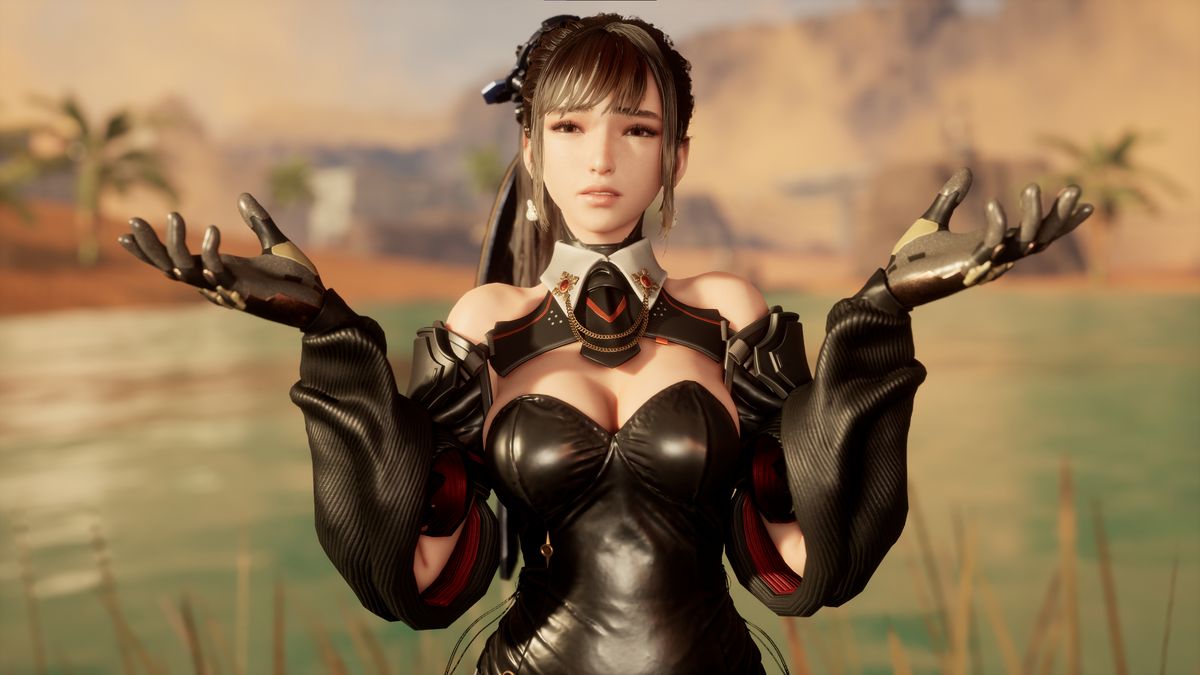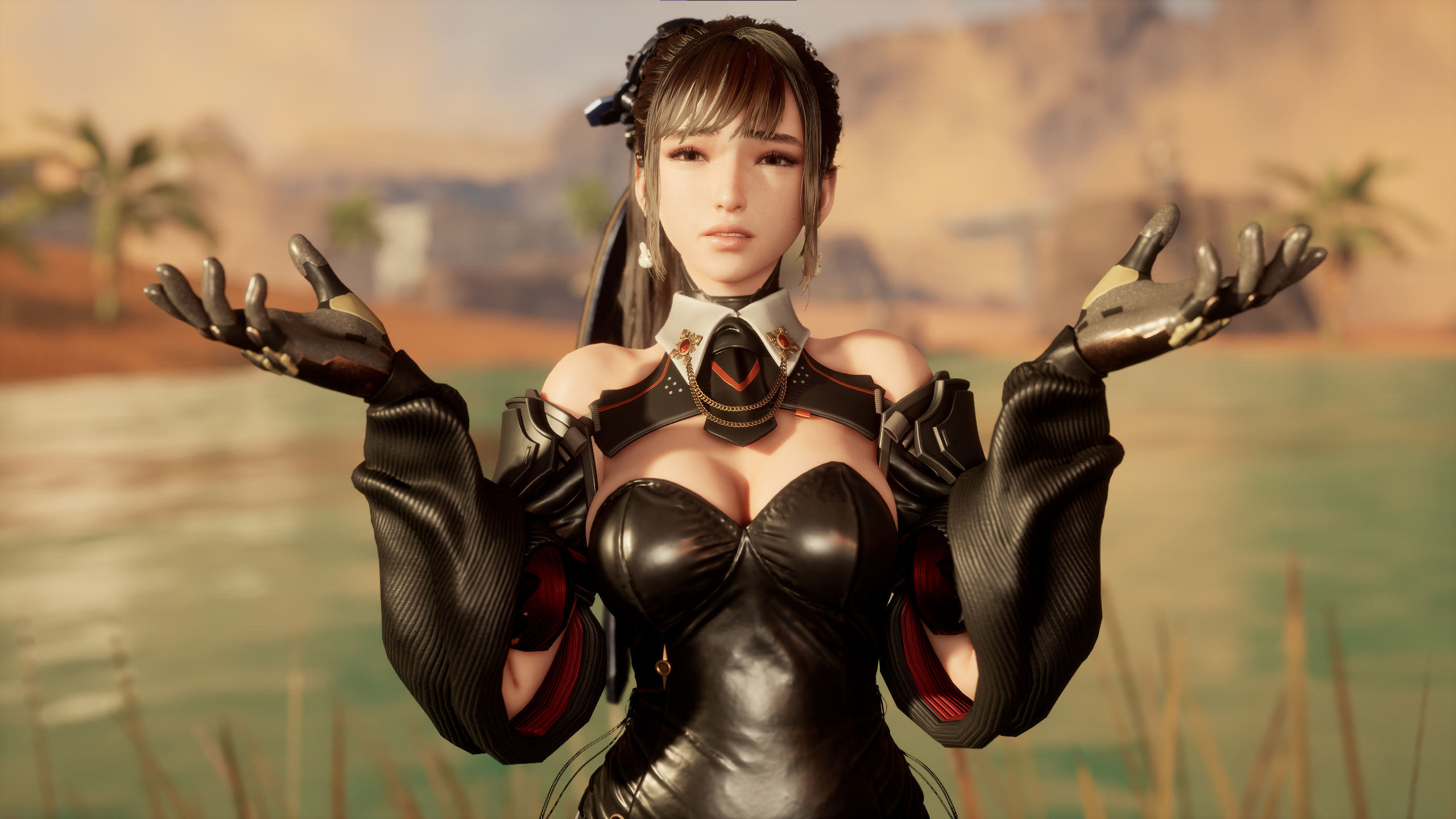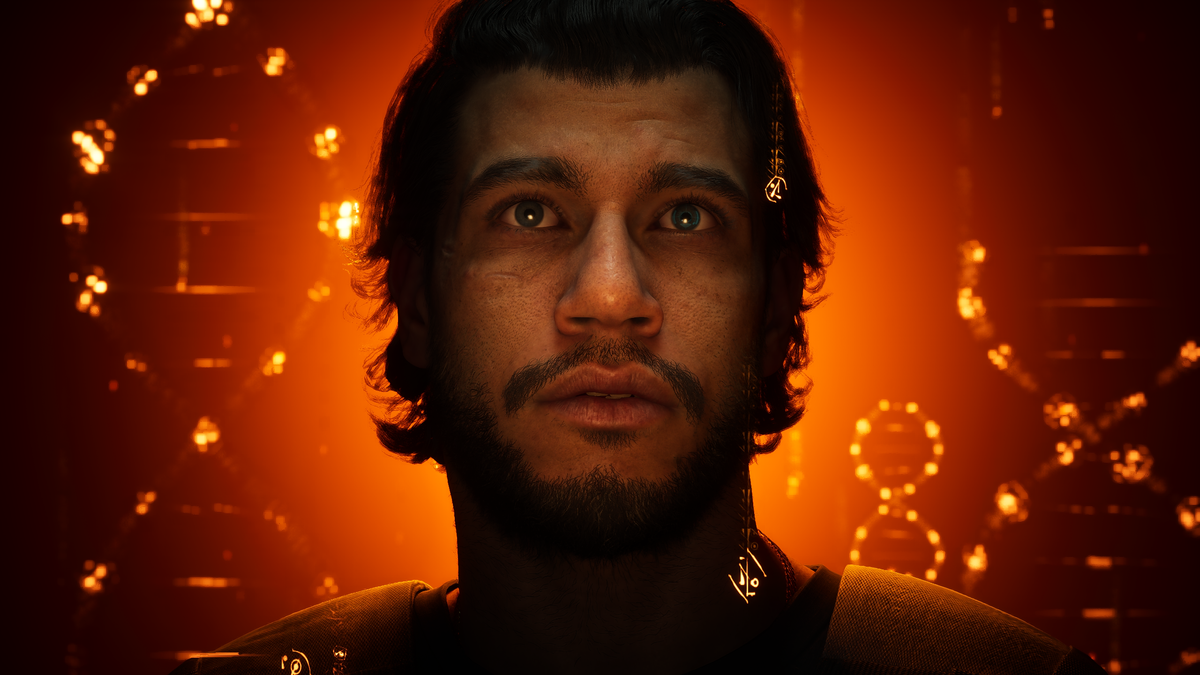
Sometimes, a story finds you at the right time, hits you in the right place, speaks to a part of you you’ve kept buried, deep down. When we find a connection with a piece of art, much of that connection is forged because of when we find it, not just what it has to say. I stumbled onto Ambrosia Sky at the right time, and it spoke to me. No game at Summer Game Fest hit me harder, but I like to think that Ambrosia Sky would have resonated with me no matter when I found it, which is a testament to how developer Soft Rains has crafted this world.
Part of this is the conceit, which is unlike anything else I’ve seen in a video game. Ambrosia Sky follows Dalia, a deep-space disaster specialist known as a Scarab. Scarabs are mystical field scientists whose job revolves around the dead. They’re not soldiers; a Scarab can’t save you. Their job is to catalogue a space, restore it, and say goodbye to the dead. They’re a loose-knit organization of scientists with one purpose: they seek death to understand what kills us, so they can prevent it. They believe that in understanding death among the stars, they can find the key to preventing cellular death and decay. The Ambrosia Project is their attempt at finding immortality. Dalia doesn’t believe in the spiritual side of being a Scarab (for many, it’s a religion, not just a job), but she’s good at it and enjoys the work.
But at the same time, this isn’t just a scientific exercise for Dalia. Ambrosia Sky sends her to the Cluster, an agricultural colony on Saturn’s rings. Once paramount in humanity’s voyage of discovery and expansion among the stars, it’s now little more than a relic of a previous age, a crucial but forgotten fixture of an age long past. Time has literally passed it by. But it’s where Dalia grew up and escaped from in her own search for something more. And now she’s returning to investigate a crisis that killed almost everyone she knew. It’s hardly a happy homecoming, and it’s forcing her to come to terms with both her own choices and the relationships she left behind, as well as her guilt for surviving what killed most of the people she knew.
My goal was simple: find out what happened to Gerald Parker, and if he was dead, take a sample of his DNA to send back to the Ambrosia Project, then perform a “bioremediation” on the body.It’s a lot of setup, I know. But that’s what you have to understand to get where my demo started. I played two levels of Ambrosia Sky (one at SGF, one at home; both are accessible in the Steam demo available now), but I want to focus on the one I played at SGF. My goal was simple: find out what happened to Gerald Parker, and if he was dead, take a sample of his DNA to send back to the Ambrosia Project, then perform a “bioremediation” on the body. See, Sacarbs can only perform death rituals on people who have consented to having their DNA included in the project; even then, getting a viable sample is tricky. You’ll only get one if the person in question has been dead for less than 48 hours.
I entered the area armed with a chemical sprayer and a couple of upgrades built from the fungus Dalia was studying on the Cluster. One essential made my chemical sprayer into a flamethrower – perfect for cleaning out pesky contamination. The other essentially served as an electrical conduit, allowing me to power things like doors by connecting them to anything else that uses electricity. Handy.
From the moment I entered, the environment felt hostile. I found bodies that had been overgrown by fungus, killed by a disease called clusterlung. Contamination was everywhere. Energized roots charged with electricity covered the walls, spread out like the limbs of an overgrown tree, short-circuiting any electronics they touched. The thick, bulbous roots of the exploder fungus, which does exactly what its name implies, wouldn’t hurt me unless I triggered it, but it did block my path. I had to be careful. Spraying indiscriminately risked a lot of things exploding. If I wasn’t careful where I stepped, I’d get zapped for my trouble. I even saw a small alien life form (Dalia muses that she was told all the aliens were wiped out before she was born) that can transform into a small turret and shoot at me. I had to stay alert.

But there are other reasons to be careful, too. Dalia is a scientist first and foremost, and like any good scientist, she needs to take samples of the fungus here to understand what it is. That means harvesting it carefully. And that means detaching the fungal fruit (think a mushroom fruit vs. its roots) from the stalk safely, which means precision. I didn’t wanna use my sprayer on the fruit itself. I wanted to sever it from the stalk and then collect it. And the samples I got could be used to upgrade my sprayer later on.
The samples I got could be used to upgrade my sprayer later on.As I cleaned and collected samples, I learned more about the cluster and the people who lived there. I read messages from Dalia’s former best friend, Maeve, and notes from Gerald. He sounds rude, perhaps condescending. But Dalia knew him. She was one of the only people he seemed to like. One terminal houses an ominous warning from an anonymous sender, sent to Dalia’s stepmother, Hale, who was in a leadership position on the Cluster. “It sleeps but does not dream,” they write. “If it dreams, its dream will end all of time.” What is it? The fungus? Is it true? Neither I nor Dalia know, but we push forward. We are patient. We are careful.

I come across an unpowered door. Remembering my sprayer-as-electrical-conduit, I clean out the electrical contamination and connect from a monitor to the door, opening a room with the area’s gravity controls. I switch them off. That opens up the way forward. In zero-gravity, time seems to slow down. I can move more freely, access places blocked by the fungus, get into position, and more easily sever the explosive fruit from its stalk without burning everything down. It also allows me to get the most out of Dalia’s tether, which can pull me from place to place or snag fruit out of the air. It’s a nifty tool with the gravity off, but with it on? I’m zoomin’.
The farther I get, the more dire the messages on the terminals get. Gerald sends a message to his friend Lorrie telling her to stop the whispering at night. Lorrie tells him it’s not her, it’s the food they’re growing. “It knows we eat it,” she says. As things get worse, and the contamination spreads, I learn Lorrie asked Gerald to leave with her. He refused, and stayed to tend the crops alone.

Eventually, I find his unit. The door is open. It’s a small apartment with two floors. As I explore it, I see the remnants of a life. Little decorations, placed with care, that tell me so much in a sparsely furnished space. I find Gerald’s personal terminal. There’s a message from Dalia there that’s fifteen years old, explaining why she had to leave, thanking him for letting her hide in the fields. Dalia can scarcely believe that he saved it. But you never know how what you say or do will resonate with someone else.
At last, I meet Gerald. His body is slumped in a chair, overtaken by fungus. And the weight of what I’m doing comes back to me. I am retrieving a corpse, someone she knew. And when she greets him, there’s a sadness, an acceptance, in the writing that haunts me. She reads his Last Will, his consent to be part of the Ambrosia Project. He tells us he’s recording this because he has to, and that he doesn’t care what happens to his body because he’ll be dead. “Make moonshine or save humanity. It’s yours now,” he says. We see what happened to him as a series of beautifully illustrated panels that look like they were plucked from a comic book. And then Dalia performs his Death Rite, an organic act of cremation that spreads out from the panels and his body, until everything is covered, and then falls away. It looks like a time-lapse of a tree sprouting leaves after a long winter. It’s beautiful, in a way. Rebirth. Dalia tells Gerald she was able to do this last thing for him. And then she collects his DNA, and I have to leave.

I could tell you about the trip back, about how the fungus sprouted at random and hindered my progress and I saw another little alien slug. But my mind, and Dalia’s, I like to think, was still in that room, with Gerald. I knew the way back, but it wasn’t where I was.
As I played Ambrosia Sky, the words “thoughtful” and “intimate” came to mind often. It’s a game about a crisis on an agricultural colony, yes, but the stakes are deeply personal, and every part of its design feels grounded in who Dalia is, the work she does, and her personal history. The more I spoke to Soft Rains studio head Joel Burgess and art director Adam Volker during and after my demo, the more I realized how intentional all of it was, and how much work it’s taken to create. The title, Ambrosia Sky, evokes ancient myth. Ambrosia, the food of the gods. In this case, the mushrooms that would allow us to sustain life beyond Earth. Even the title tells part of the story.

Burgess told me that he hopes players don’t notice all the work it has taken to put it all together, at least at first. “You want that work to feel invisible. But I hope we make a world and a game that people want to think about, want to spend time in, that lives in their brains well beyond the time that it lives on their screens, to where they then do appreciate the depth, the extra effort that we've put in to make sure that systems work and interact with each other, as well as the characters and their motivations in the world and the setting, and things that exist well beyond the frame of this game,” he said.
Based on my time with Ambrosia Sky, I think they may have succeeded. I played a lot of games at Summer Game Fest. But few of them stuck with me like Ambrosia Sky, and none hit me quite as hard in such a short time. I am excited to see what else Soft Rains has in store for us on the Cluster, but one thing is clear: their ambition is great. Like the humanity of Ambrosia Sky, they reach skyward, pursuing a lofty ideal. And I can’t wait to see what else they have to show us among the stars.













